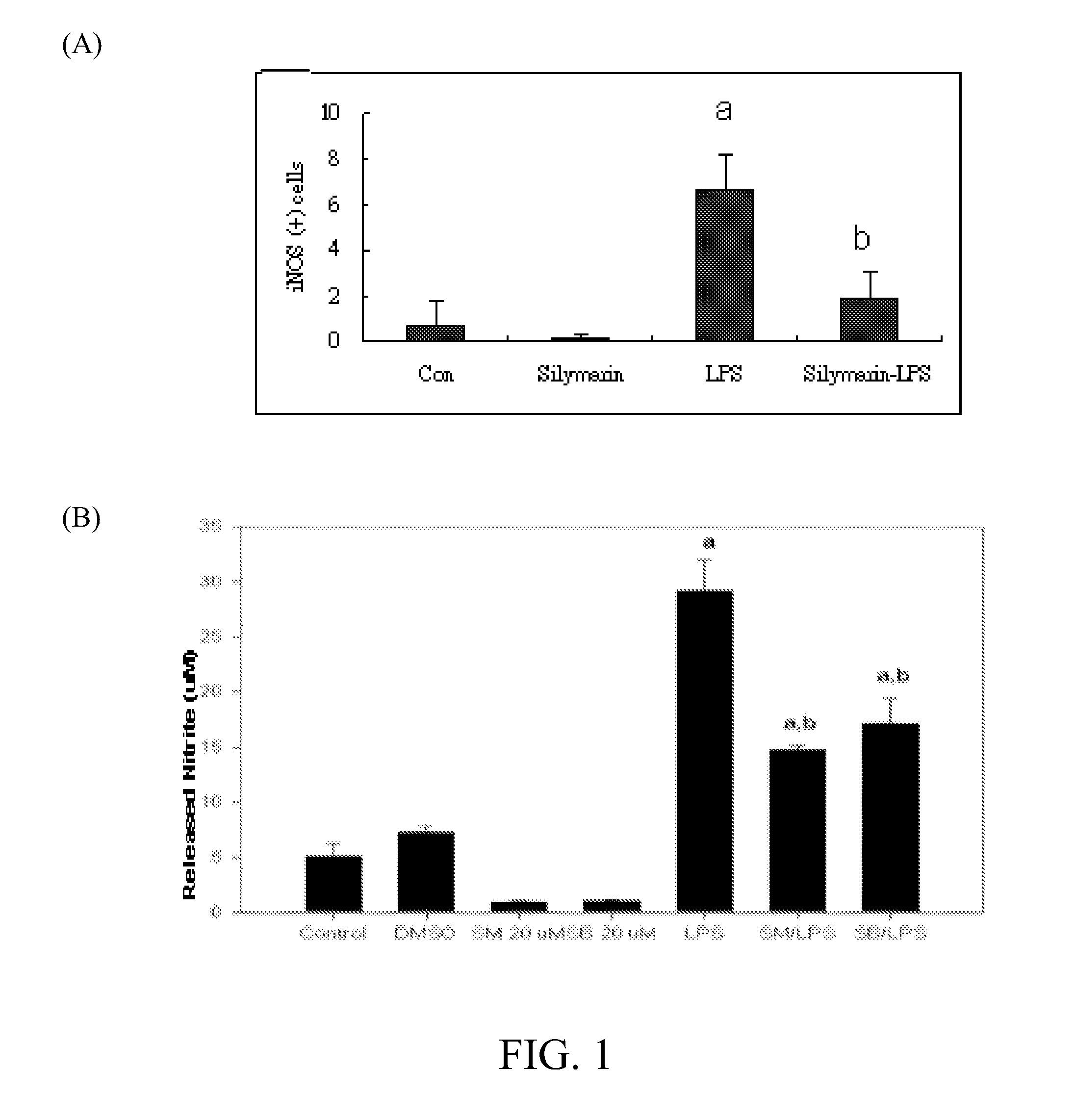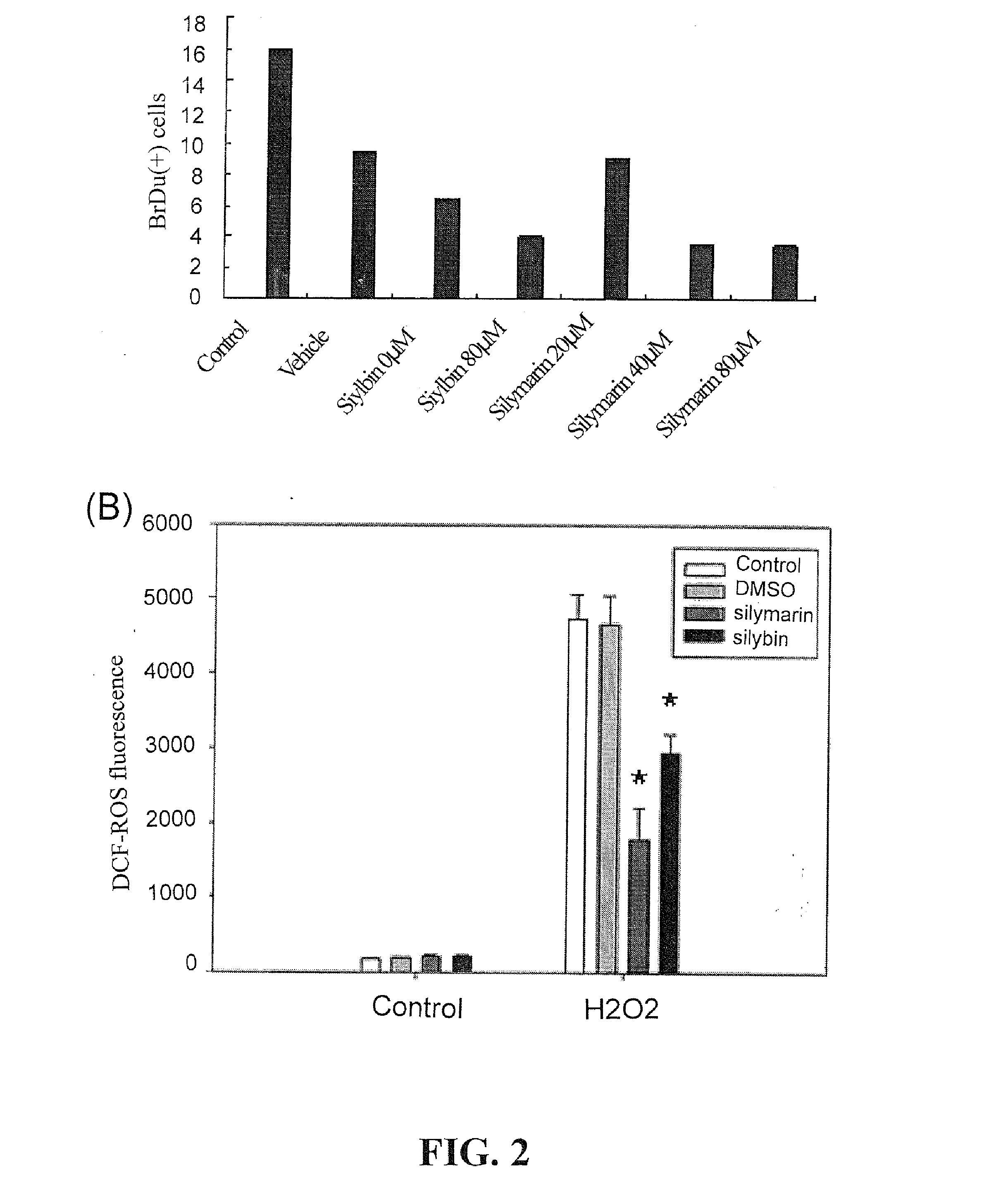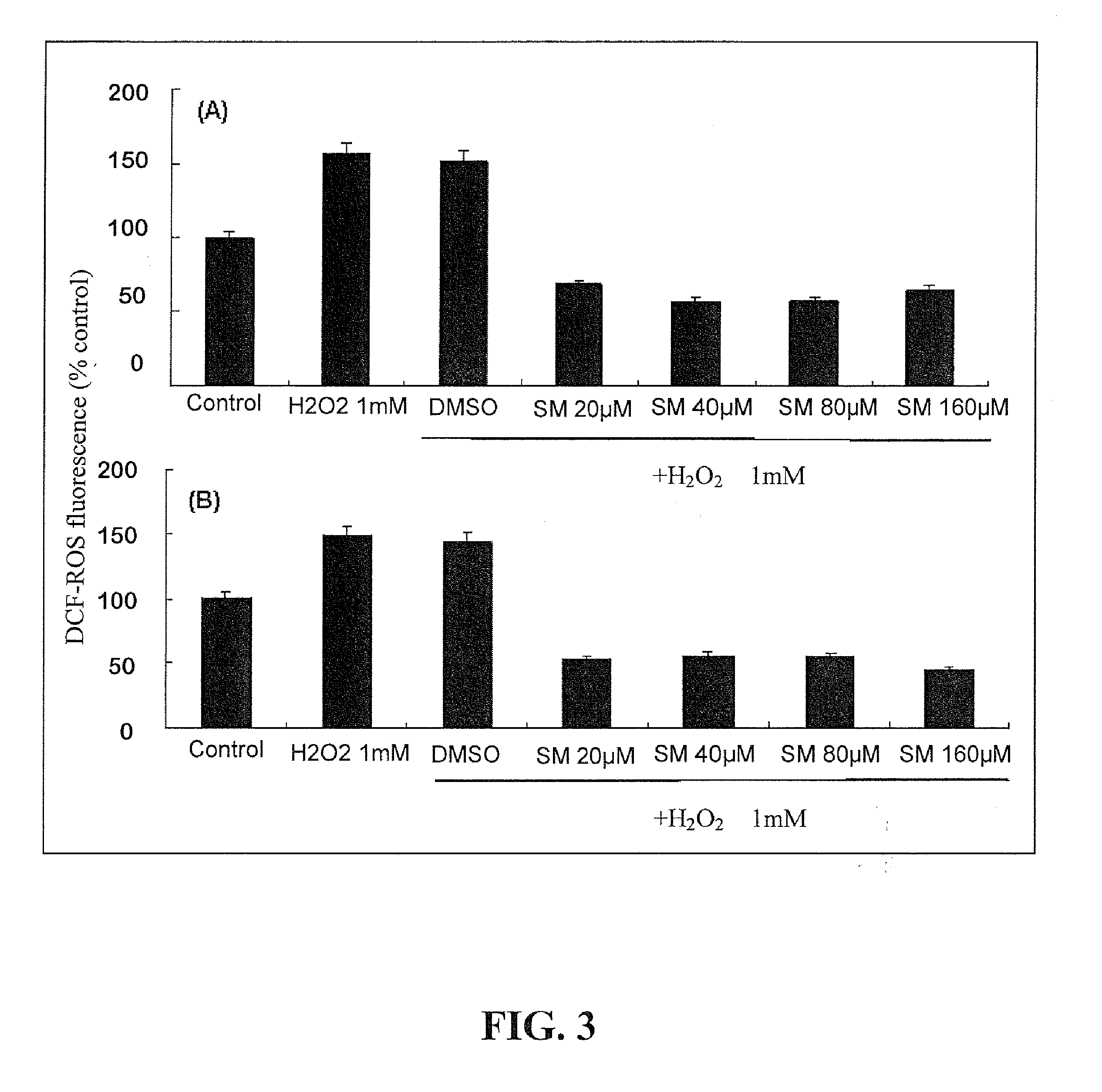Use of silymarin and silybin in the treatment of neural injury
- Summary
- Abstract
- Description
- Claims
- Application Information
AI Technical Summary
Benefits of technology
Problems solved by technology
Method used
Image
Examples
example 1
Silymarin Does Not Affect the Cell Types in Spinal Cord Neuronal-Glial Cultures
[0042]On the second day after cell seeding, mixed neuronal / glial cultures were incubated with silymarin (40 μM) for 3 days. Cells were then processed for immunohistochemistry for neuronal, astroglial or microglial markers.
[0043]Primary neuronal-glial cultures were plated on poly-lysine coated plates and fixed in 4% paraformaldehyde solution for 20 mins. Cells were permeabilized with 0.2% Triton X-100. Cells were then stained with primary antibodies, including anti-βIII tubulin (Covance MMS-435P), anti-GFAP (Chemicon AB 5804) and anti-ED1 (Serotec MCA 341) antibodies, and with the respective fluorescently tagged secondary antibodies (Jackson ImmunoResearch Inc.). βIII tubulin is a neuron-specific marker, GFAP is an astroglial marker, and ED1 is a microglial marker. Images of spinal neurons or non-neuronal cells were obtained with a fluorescent microscope equipped with fluorescence optics. Images of neurons...
example 2
Silymarin Protects Spinal Cord Neuronal-Glial Cultures from LPS- and Kainate-Induced Toxicity
[0045]On the second day after cell seeding, mixed neuronal-glial cultures were treated with silymarin (40 μM) in the presence or absence of endotoxin lipopolysaccharide (LPS, 1.2 μg / ml) or excitotoxin kainic acid (KA, 150 μM) for 2 days. The medium was collected for assay of released nitrate / nitrite and the cells were harvested for immunohistochemistry and western blot analysis.
[0046]After paraformaldehyde fixation and triton X-100 permeabilization, cells were incubated with primary antibody anti-IL-10 (Chemicon) overnight (4° C.) and subsequently incubated with Donkey anti-goat 488 (Alexa) or Donkey anti-mouse cy3 (Jackson Lab) at room temperature for 90 mins. According to the results (data not shown), LPS or KA treatment induced IL-10 expression in the spinal cord cultures.
[0047]Cells were also processed for western blot analysis for inducible nitric oxide synthase (iNOS) and cyclooxygenas...
example 3
Silymarin and Silybin Inhibits Cell Proliferation in Mixed Glial Cultures
[0050]The proliferative activity of mixed glial cultures was investigated by treating cells with 5-bromo-2-deoxyuridine (BrdU), a thymidine analog incorporated into genetic material during the S phase of mitotic division.
[0051]Silymarin or silybin (20˜80 μM) was added to subconfluent glial cells for 2 days. Two hours before cell fixation, 5-bromo-2-deoxyuridine (BrdU, 10 μM), which could be taken up by proliferative cells, was added to cultured cells. After being fixed with 4% paraformaldhyde (30 mins, room temperature), cells were treated with 2 M HCl (10 min, at 37° C.) to denature their DNA. Cells were then repeatedly washed with PBS until the pH reached 6.5 or above. Cells were further double-treated with mouse anti-BrdU (1:100, Chemicon, Temecula, Calif.) and rabbit anti-GFAP (1:300, Chemicon) antibodies (4° C., overnight), followed by incubation with FITC- and rhodamine-conjugated secondary antibodies (ro...
PUM
| Property | Measurement | Unit |
|---|---|---|
| Area | aaaaa | aaaaa |
Abstract
Description
Claims
Application Information
 Login to View More
Login to View More - R&D
- Intellectual Property
- Life Sciences
- Materials
- Tech Scout
- Unparalleled Data Quality
- Higher Quality Content
- 60% Fewer Hallucinations
Browse by: Latest US Patents, China's latest patents, Technical Efficacy Thesaurus, Application Domain, Technology Topic, Popular Technical Reports.
© 2025 PatSnap. All rights reserved.Legal|Privacy policy|Modern Slavery Act Transparency Statement|Sitemap|About US| Contact US: help@patsnap.com



